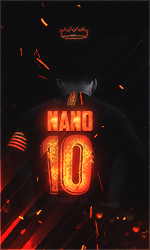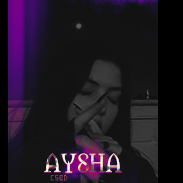Leaderboard
The search index is currently processing. Leaderboard results may not be complete.
Popular Content
Showing content with the highest reputation on 05/26/2023 in all areas
-
Hello dear Players, today we are starting a Competition that will last for a Week and it is called "Players with the most Activity". This means 3x Players have the Chance to win one of the following Prizes: 1. Place: 1x Month VIP + VM + 3K Points. 2. Place: 2x Week VIP + VM + 2K Points. 3. Place: 1x Week VIP + VM + 1K Points. Rules: In order to take part in the Competition you have to answer here in the Topic with "I'm In and your Nick in Game" Information: If you already have bought Permanent - VIP, you get double the Points from the Prize! Reminder: This Competition is only for Players, not for Admins! Good luck and we wish you will have fun! Best regards Founder VollmeR.4 points
-
3 points
-
2 points
-
Hello, you can post here you're best score from NewLifeZm server. ¤ Name: ¤ Date & time: ¤ Screenshoot:1 point
-
¤ Nickname: -Fr3oN- ¤ Name: Ahmed ¤ Age: 16 ¤ Country: Egypt ¤ City: Cairo ¤ Favorite Games :Pes 6 and 13 and 2018, Cs 1.6, Need For Speed. Call of duty Modern Warfare 2\4 ¤ Favorite Shows: The rings of power and Dragon of the home .Lord of the rings , Winx Sada ¤ Favorite Movies: Wakanda for ever ,Fast and furious ¤ Favorite Songs / Favorite genre: According to my mood for the better ¤ What would you like to do in life: Nothing 🙂 ¤ Favorite actor - why ?: idk Names but i Like alot of Actors ¤ Favorite actress - why ?: Angelina Jolie ¤ Do you smoke? / What brand of cigarettes do you smoke :No ¤ Favorite alcoholic drink: No I Cant Drink This Things ¤ Favorite juice: Banana Orange ¤ In what country would you like to live: I just want peace of mind and happiness ¤ Favorite football team: ِAl-Ahly and RMA ¤ Car models: BMW ¤ A brief description about you: Hasty and I do not like disturbance and I love football a lot ¤ How did you find NewLifeZm?: By Luck ¤ If you won 1 million dollars, what would be the first thing you do?: Finding a new set-up. Traveling to Morocco to support my team and many more1 point
-
1 point
-
Money is any item or medium of exchange that is accepted by people for the payment of goods and services, as well as the repayment of loans. Money makes the world go 'round. Economies rely on money to facilitate transactions and to power financial growth. Typically, it is economists who define money, where it comes from, and what it's worth. Here are the multifaceted characteristics of money. KEY TAKEAWAYS Money is a medium of exchange; it allows people and businesses to obtain what they need to live and thrive. Bartering was one way that people exchanged goods for other goods before money was created. Like gold and other precious metals, money has worth because for most people it represents something valuable. Fiat money is government-issued currency that is not backed by a physical commodity but by the stability of the issuing government. Above all, money is a unit of account - a socially accepted standard unit with which things are priced. Medium of Exchange Before the development of a medium of exchange—that is, money—people would barter to obtain the goods and services they needed. Two individuals, each possessing some goods the other wanted, would enter into an agreement to trade. Early forms of bartering, however, do not provide the transferability and divisibility that makes trading efficient. For instance, if someone has cows but needs bananas, they must find someone who not only has bananas but also the desire for meat. What if that individual finds someone who has the need for meat but no bananas and can only offer potatoes? To get meat, that person must find someone who has bananas and wants potatoes, and so on. The lack of transferability of bartering for goods is tiring, confusing, and inefficient. But that is not where the problems end; even if the person finds someone with whom to trade meat for bananas, they may not consider a bunch of bananas to be worth a whole cow. Such a trade requires coming to an agreement and devising a way to determine how many bananas are worth certain parts of the cow. Commodity money solved these problems. Commodity money is a type of good that functions as currency. In the 17th and early 18th centuries, for example, American colonists used beaver pelts and dried corn in transactions.1 Possessing generally accepted values, these commodities were used to buy and sell other things. The commodities used for trade had certain characteristics: they were widely desired and, therefore, valuable, but they were also durable, portable, and easily stored. Another, more advanced example of commodity money is a precious metal such as gold. For centuries, gold was used to back paper currency—up until the 1970s.2 In the case of the U.S. dollar, for example, this meant that foreign governments were able to take their dollars and exchange them at a specified rate for gold with the U.S. Federal Reserve. What's interesting is that, unlike the beaver pelts and dried corn (which can be used for clothing and food, respectively), gold is precious purely because people want it. It is not necessarily useful—you can't eat gold, and it won't keep you warm at night, but the majority of people think it is beautiful, and they know others think it is beautiful. So, gold is something that has worth. Gold, therefore, serves as a physical token of wealth based on people's perceptions. This relationship between money and gold provides insight into how money gains its value—as a representation of something valuable. Impressions Create Everything The second type of money is fiat money, which does not require backing by a physical commodity. Instead, the value of fiat currencies is set by supply and demand and people's faith in its worth. Fiat money developed because gold was a scarce resource, and rapidly growing economies growing couldn't always mine enough to back their currency supply requirements.34 For a booming economy, the need for gold to give money value is extremely inefficient, especially when its value is really created by people's perceptions. Fiat money becomes the token of people's perception of worth, the basis for why money is created. An economy that is growing is apparently succeeding in producing other things that are valuable to itself and other economies. The stronger the economy, the stronger its money will be perceived (and sought after) and vice versa. However, people's perceptions must be supported by an economy that can produce the products and services that people want. For example, in 1971, the U.S. dollar was taken off the gold standard—the dollar was no longer redeemable in gold, and the price of gold was no longer fixed to any dollar amount.5 This meant that it was now possible to create more paper money than there was gold to back it; the health of the U.S. economy backed the dollar's value. If the economy stalls, the value of the U.S. dollar will drop both domestically through inflation and internationally through currency exchange rates. The implosion of the U.S. economy would plunge the world into a financial dark age, so many other countries and entities are working tirelessly to ensure that never happens. Today, the value of money (not just the dollar, but most currencies) is decided purely by its purchasing power, as dictated by inflation.6 That is why simply printing new money will not create wealth for a country. Money is created by a kind of a perpetual interaction between real, tangible things, our desire for them, and our abstract faith in what has value. Money is valuable because we want it, but we want it only because it can get us a desired product or service. How Is Money Measured? But exactly how much money is out there, and what forms does it take? Economists and investors ask this question to determine whether there is inflation or deflation. Money is separated into three categories so that it is more discernible for measurement purposes: M1 – This category of money includes all physical denominations of coins and currency; demand deposits, which are checking accounts and NOW accounts; and travelers' checks. This category of money is the narrowest of the three, and is essentially the money used to buy things and make payments (see the "active money" section below).7 M2 – With broader criteria, this category adds all the money found in M1 to all time-related deposits, savings accounts deposits, and non-institutional money market funds. This category represents money that can be readily transferred into cash.8 M3 – The broadest class of money, M3 combines all money found in the M2 definition and adds to it all large time deposits, institutional money market funds, short-term repurchase agreements, along with other larger liquid assets.9 M3 indicates a country's money supply or the total amount of money within an economy. Active Money The M1 category includes what's known as active money—the total value of coins and paper currency in circulation.7 The amount of active money fluctuates seasonally, monthly, weekly, and daily. In the United States, Federal Reserve Banks distribute new currency for the U.S. Treasury Department.10 Banks lend money out to customers, which becomes active money once it is actively circulated. The variable demand for cash equates to a constantly fluctuating active money total. For example, people typically cash paychecks or withdraw from ATMs over the weekend, so there is more active cash on a Monday than on a Friday. The public demand for cash declines at certain times—following the December holiday season, for example.11 How Money Is Created We have discussed why and how money, a representation of perceived value, is created in the economy, but another important factor concerning money and the economy is how a country's central bank (the central bank in the United States is the Federal Reserve or the Fed) can influence and mani[CENSORED]te the money supply. If the Fed wants to increase the amount of money in circulation, perhaps to boost economic activity, the central bank can, of course, print it. However, the physical bills are only a small part of the money supply. Another way for the central bank to increase the money supply is to buy government fixed-income securities in the market. When the central bank buys these government securities, it puts money into the marketplace, and effectively into the hands of the public. How does a central bank such as the Fed pay for this? As strange as it sounds, the central bank simply creates the money and transfers it to those selling the securities.12 Alternatively, the Fed can lower interest rates allowing banks to extend low-cost loans or credit—a phenomenon known as cheap money—and encouraging businesses and individuals to borrow and spend. To shrink the money supply, perhaps to reduce inflation, the central bank does the opposite and sells government securities. The money with which the buyer pays the central bank is essentially taken out of circulation. Keep in mind that we are generalizing in this example to keep things simple. Remember, as long as people have faith in the currency, a central bank can issue more of it. But if the Fed issues too much money, the value will go down, as with anything that has a higher supply than demand. Therefore, the central bank cannot simply print money as it wants. The History of American Money Currency Wars In the 17th century, Great Britain was determined to keep control of both the American colonies and the natural resources they controlled. To do this, the British limited the money supply and made it illegal for the colonies to mint coins of their own. Instead, the colonies were forced to trade using English bills of exchange that could only be redeemed for English goods. Colonists were paid for their goods with these same bills, effectively cutting them off from trading with other countries.13 In response, the colonies regressed to a barter system using ammunition, tobacco, nails, pelts, and anything else that could be traded. Colonists also gathered whatever foreign currencies they could, the most po[CENSORED]r being the large, silver Spanish dollars. These were called pieces of eight because, when you had to make change, you pulled out your knife and hacked it into eight bits. From this, we have the expression "two bits," meaning a quarter of a dollar.13 Massachusetts Money Massachusetts was the first colony to defy the mother country. In 1652, the state minted its own silver coins including the Oak Tree and Pine Tree shillings. The state circumvented the British law stating that only the monarch of the British empire could issue coins by dating all their coins in 1652, a period when there was no monarch. In 1690, Massachusetts also issued the first paper money calling it bills of credit.13 Tensions between America and Britain continued to mount until the Revolutionary War broke out in 1775. The colonial leaders declared independence and created a new currency called Continentals to finance their side of the war. Unfortunately, each government printed as much money as it needed without backing it to any standard or asset, so the Continentals experienced rapid inflation and became worthless. This experience discouraged the American government from using paper money for almost a century.13 Aftermath of the Revolution The chaos from the Revolutionary War left the new nation's monetary system a complete wreck. Most of the currencies in the newly formed United States of America were useless. The problem wasn't resolved until 13 years later in 1788 when Congress was granted constitutional powers to coin money and regulate its value. Congress established a national monetary system and created the dollar as the main unit of money.14 There was also a bimetallic standard, meaning that both silver and gold could be valued in and used to back paper dollars.15 It took years to get all the foreign coins and competing for state currencies out of circulation. Bank notes had been in circulation all the time, but because banks issued more notes than they had coin to cover, these notes often traded at less than face value.16 Eventually, the United States was ready to try paper money again. In the 1860s, the U.S. government created more than $400 million in legal tender to finance its battle against the Confederacy in the American Civil War. These were called greenbacks because their backs were printed in green. The government-backed this currency and stated that it could be used to pay back both public and private debts. The value did, however, fluctuate according to the North's success or failure at certain stages in the war.17 Aftermath of the Civil War In February 1863, the U.S. Congress passed the National Bank Act. This act established a monetary system whereby national banks issued notes backed by U.S. government bonds. The U.S. Treasury then worked to get state bank notes out of circulation so that the national bank notes would become the only currency.18 During this period of rebuilding, there was debate over the bimetallic standard. Some advocated using just silver to back the dollar, others advocated for gold. The situation was resolved in 1900 when the Gold Standard Act was passed, which made gold the sole backing for the dollar. This backing meant that, in theory, you could take your paper money and exchange it for the corresponding value in gold. In 1913, the Federal Reserve was created and given the power to steer the economy by controlling the money supply and interest rates on loans.19 The Bottom Line Money has changed substantially since the days of shells and skins, but its main function hasn't changed at all. Regardless of what form it takes, money offers us a medium of exchange for goods and services and allows the economy to grow as transactions can be completed at greater speeds. https://www.investopedia.com/insights/what-is-money/1 point
-
1 point
-
1 point
-
1 point
-
1 point
-
This post cannot be displayed because it is in a password protected forum. Enter Password
-
This post cannot be displayed because it is in a password protected forum. Enter Password
-
This post cannot be displayed because it is in a password protected forum. Enter Password
-
1 point
-
This post cannot be displayed because it is in a password protected forum. Enter Password
-
1 point
-
1 point
-
1 point
-
Hi guys new video is out STREETZM - @aNaKoNDa - @A.N.R Anouar A.N.R - @olee - @Majestic ALi ✪ - @Playboy™ - @Phoenix™ - @Otman™ - @Appel1 point
-
1 point
-
1 point
-
Nice to know one more person who likes sports. Welcome to the newlifezm ❤1 point
-
1 point
-
1. Is allowed to post only 1 news at every 24 hours. 2. Must contain at least 6 lines (MANDATORY) 3. Before to post, check if another member has already published the news. 4. The news can not contain inappropriate images / scenes, etc.. (sex, pornography, violence, +18). 5. If you publish 2 or more news in a day, you will be punished with warning points according to the rules of the community. 6. Put Link of the news that you got from google mandatory, otherwise it will be hidden.1 point
-
You Want To Be A VIP - Member Of NewLifeZM? Benefits * Higher Damage + More Ammo And Points | Daune Mai Mari + Mai Mult Ammo Si Points. * +300+ Health In Spawn | +300 Viata Din Spawn. * +200 Armor In Spawn | +200 Armura Din Spawn. * +4 Jumps In Spawn | +4 Jumps Din Spawn. * Laser Rays - View Through Walls | Raze Laser - Vezi Prin Pereti. * White VIP Player Model | Model Alb De Vip. * VIP Tag On Scoreboard | VIP Tag In Tabla De Scoruri. Prices & Periods * 1x Month VIP = 10€ - [Bonus: +500 Points]. * 2x Month's VIP = 15€ - [Bonus: +1500 Points]. * 3x Month's VIP = 25€ - [Bonus: +2500 Points]. * Permanent VIP = 50€ - [Bonus: +5000 Points]. - This is the direct link to pay for the VIP through PayPal: https://www.paypal.com/ncp/payment/7VYEV26AY6G6C NOTE : MAKE SURE TO CONTACT @Cyberpsycho THROUGH WHATSAPP OR DISCORD AFTER MAKING THE PURCHASE VIP - Menus In Addition To The VIP - Rank, You Can Also Buy Our VIP - Menus. Price: 2€ Per Month Or 12€ Permanent (Both menus included). VIP Weapons & Mods Menu: Features: Access to [M4A1 Glacier (Freeze Zombies)], [Reptile - Mod], [Magnum Maestro - New Human Mod], [M4A1 Fire (Burn Zombies)] , [Infinity Laser Fists - Fanciful + Burst Right Click] VIP Knives Menu: Features: Access to 6 Different knife models + a slight extra move speed Points - Prices * 20000 Points = 50€. * 10000 Points = 30€. * 6000 Points = 20€. * 3000 Points = 15€. * 2500 Points = 10€. * 1000 Points = 5€. * 500 Points = 3€. - This is the direct link to pay for the Points through PayPal: https://www.paypal.com/ncp/payment/F2GF55J8VR73C NOTE : MAKE SURE TO CONTACT @Cyberpsycho THROUGH WHATSAPP OR DISCORD AFTER MAKING THE PURCHASE Contact & Methods For Payment @Cyberpsycho = WhatsApp: +96278583721 Methods: PayPal : https://paypal.me/ammarsawalha01?country.x=JO&locale.x=en_US Revolut is possible, Contact @Cyberpsycho on WhatsApp1 point












